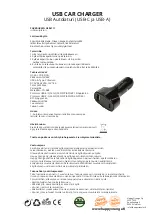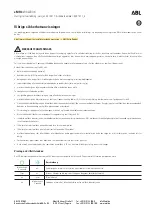
130
Do not drive on a deflated – flat –
tire unless your vehicle is
equipped with Run Flat tires. A flat tire
greatly impairs steering and braking
response, and can lead to complete
loss of control over the vehicle. Avoid
overloading the vehicle so that the per-
mitted load on the tires is not
exceeded. Overloading can lead to
overheating and internal tire damage.
The ultimate result can assume the
form of a sudden air loss.
Unusual vibrations encountered during
normal vehicle operation can indicate a
flat tire or some other vehicle malfunc-
tion. This type of problem can be
caused by contact with curbs, etc. This
is also true for irregularities in the vehi-
cle's handling characteristics, such as a
pronounced tendency to pull to the left
or right. Should this occur, respond by
immediately reducing your speed. Pro-
ceed carefully to the nearest BMW cen-
ter or professional tire center, or have
the vehicle towed in to have it, its
wheels or its tires inspected.
Tire damage up to and including sud-
den and complete air loss can endan-
ger the lives of both the vehicle occu-
pants and other road users.
<
Tire replacement
To maintain good handling and vehicle
response, use only tires of a single
tread configuration from a single manu-
facturer.
Comply with the specified tire inflation
pressures — and be sure to have the
wheel and tire assembly balanced
every time you change a tire or wheel.
DOT quality grades
Tread wear
Traction AA A B C
Temperature A B C
All passenger car tires must con-
form to Federal Safety Require-
ments in addition to these grades.
<
Tread wear
The tread wear grade is a comparative
rating based on the wear rate of the tire
when tested under controlled condi-
tions on a specified government test
course.
For example, a tire graded 150 would
wear one and one-half – 1
1
/
2
– times as
well on the government course as a tire
graded 100. The relative performance
of tires depends upon the actual condi-
tions of their use, however, and may
depart significantly from the norm due
to variations in driving habits, service
practices and differences in road char-
acteristics and climate.
Traction
The traction grades, from highest to
lowest, are AA, A, B and C.
Those grades represent the tire's ability
to stop on wet pavement as measured
under controlled conditions on speci-
fied government test surfaces of
asphalt and concrete. A tire marked C
may have poor traction performance.
The traction grade assigned to
this tire is based on straight-
ahead braking traction tests, and does
not include acceleration, cornering,
hydroplaning, or peak traction charac-
teristics.
<
Temperature
The temperature grades are A – the
highest – B and C, representing the
tire's resistance to the generation of
heat and its ability to dissipate heat
when tested under controlled condi-
tions on a specified indoor laboratory
test wheel.
Tire condition
Online Edition for Part-No. 01 41 0 157 599 - © 09/03 BMW AG
Summary of Contents for 325CI
Page 2: ...325Ci 330Ci Online Edition for Part No 01 41 0 157 599 09 03 BMW AG ...
Page 12: ...12 Online Edition for Part No 01 41 0 157 599 09 03 BMW AG ...
Page 14: ...14 Cockpit Online Edition for Part No 01 41 0 157 599 09 03 BMW AG ...
Page 16: ...16 Instrument cluster Online Edition for Part No 01 41 0 157 599 09 03 BMW AG ...
Page 28: ...28 Online Edition for Part No 01 41 0 157 599 09 03 BMW AG ...
Page 106: ...106 Automatic climate control Online Edition for Part No 01 41 0 157 599 09 03 BMW AG ...
Page 122: ...122 Online Edition for Part No 01 41 0 157 599 09 03 BMW AG ...
Page 136: ...136 Engine compartment essentials Online Edition for Part No 01 41 0 157 599 09 03 BMW AG ...
Page 146: ...146 Online Edition for Part No 01 41 0 157 599 09 03 BMW AG ...
Page 164: ...164 Online Edition for Part No 01 41 0 157 599 09 03 BMW AG ...
Page 170: ...170 Online Edition for Part No 01 41 0 157 599 09 03 BMW AG ...
Page 184: ...Online Edition for Part No 01 41 0 157 599 09 03 BMW AG ...
















































